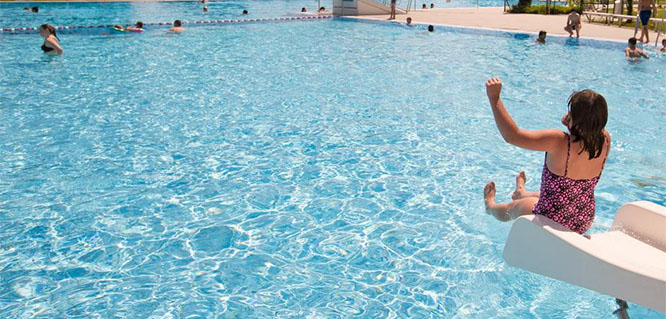Myopia is on the rise. In the UK, the number of children with myopia has doubled in the last 50 years. Globally, it’s projected that by 2050 half of the world’s population will be myopic.
Although myopia – also known as near-sightedness or short-sightedness – can run in families, environmental factors, such as spending too much time indoors have a large influence.
For most people, myopia develops from a mixture of both genetics and environmental factors. But while evidence shows that modern lifestyle factors contribute to myopia, scientists still aren’t entirely sure why.
For instance, research shows that the amount of time a child spends outdoors can play a significant role in their risk of developing myopia.
Not only do most studies show that children who spend more time outdoors are less likely to develop myopia, studies requiring children to spend extra time outdoors during school hours have shown the rate of myopia onset decreased compared with children who didn’t spend additional time outdoors.
But researchers still aren’t quite sure why this is the case. One theory is that the higher levels of light outdoors releases more dopamine into our retinal receptors (the nerves that process light signals in the eye), thus protecting against myopia.
Another suggestion is that the greater amount of physical activity children typically get outdoors prevents myopia. But studies have now shown that this has little effect.
It’s also been suggested that the different patterns and details we see in outdoor versus indoor spaces might explain the increase in myopia.
For example, one study suggests that the abundance of plain features and walls in indoor environments is to blame. This may also be why myopia tends to be more common in urban areas, however, more research is needed to understand this.
Modern lifestyles
Nevertheless, modern lifestyles often require us to spend a lot of our time indoors. For example, children are spending longer in formal education thanks to increases in school leaving age and more people pursuing higher education, which evidence suggests can cause myopia.
Yet what aspects of formalised education are causing increases in myopia is still unknown. Prolonged reading, learning at close distances, time spent indoors and increased screen use might all be to blame.
While one study suggests reading at a distance closer than 25cm may be a risk for developing myopia, reading probably only has a small effect on developing myopia.
The effect of greater screen use on myopia in children also has mixed results – probably because estimating screen use and controlling it in a long-term experiment is difficult. Regardless, further research is needed to understand whether excessive screen use is to blame for higher rates of myopia, and why this is the case.
Given the risk factors for developing myopia, there are also concerns now that stay-at-home orders and home learning during the pandemic may have worsened children’s eyesight.
Although there has been no study yet looking at the effect on children in the UK, early results elsewhere suggest that the pandemic may cause more children to develop myopia – but it’s anticipated the effects will be small. Whether the pandemic will have caused permanent increases in myopia is also yet to be seen.
Currently, the best advice for limiting the risk of developing myopia is to increase time spent outdoors, even by 40 minutes a day.








Comments
Add new comment